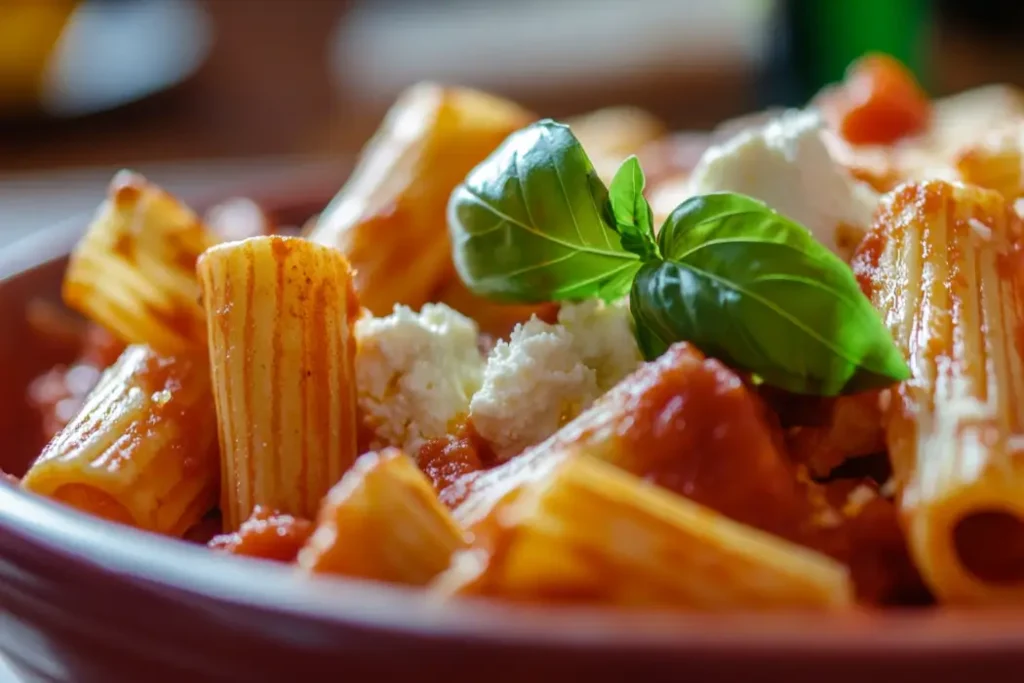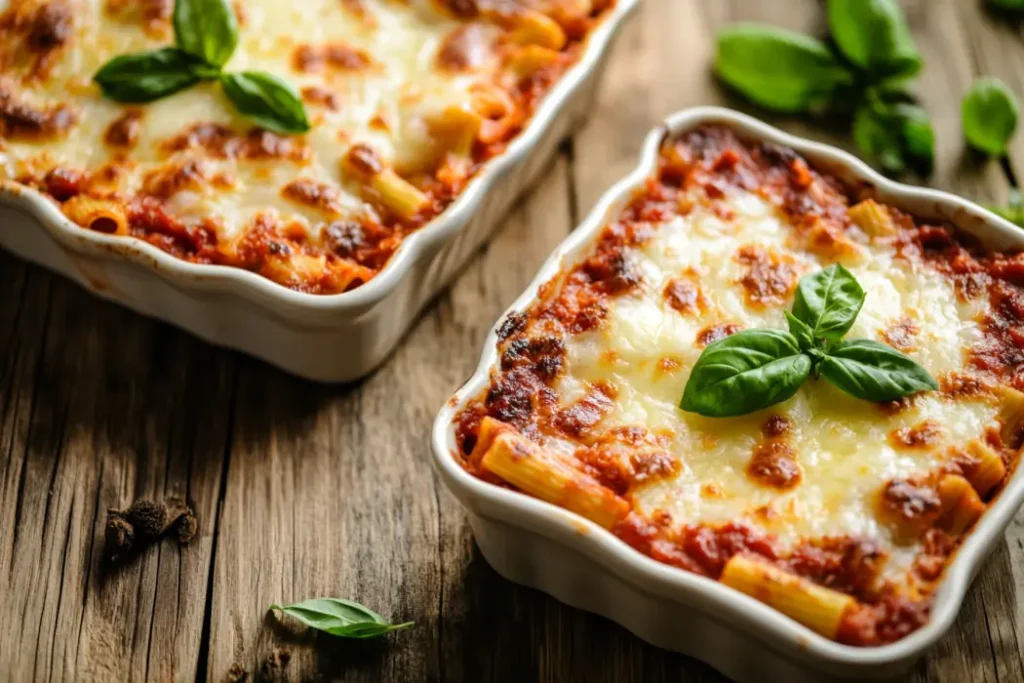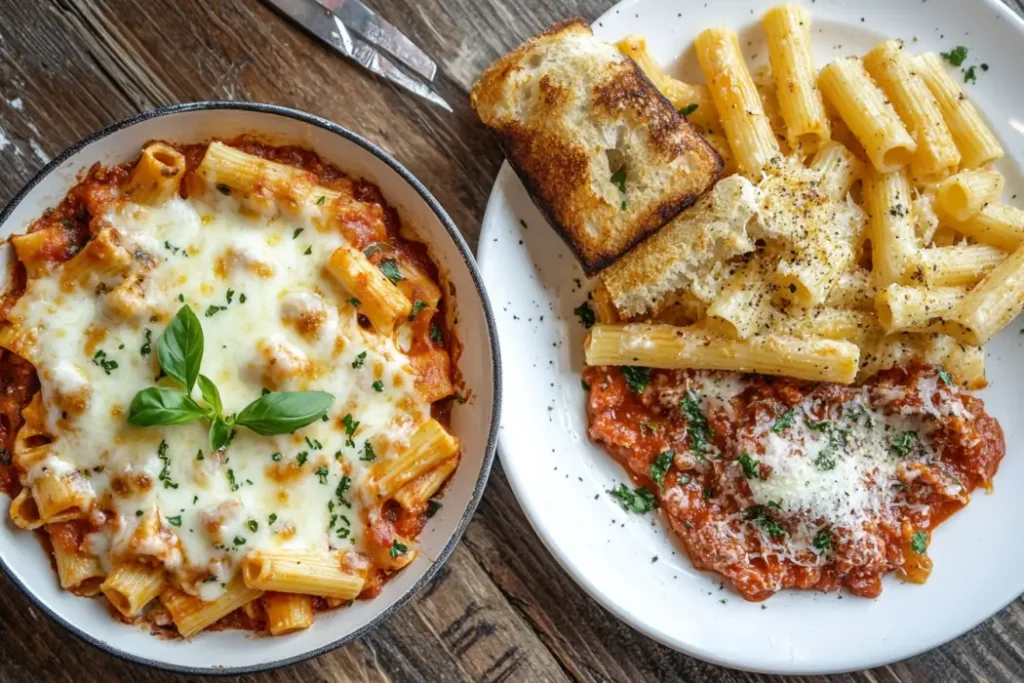
When it comes to sausages, the options can be overwhelming—bratwurst, chorizo, Italian sausage, and the famous Polish kielbasa are just a few of the many choices available. You’ve probably seen them in grocery stores or tasted them at a barbecue, but have you ever wondered what sets them apart? Specifically, what makes kielbasa different from other types of sausages?
Kielbasa, a staple in Polish cuisine, has a unique flavor, texture, and history that distinguish it from other sausages around the world. But it’s not the only sausage worth talking about! From spicy Mexican chorizo to smoky German bratwurst, sausages come in all kinds of shapes, flavors, and styles.
In this article, we’ll take a close look at kielbasa and compare it with other popular sausages to uncover their similarities and differences. You’ll learn about what makes kielbasa so special, how it’s traditionally prepared, and how it stands out in terms of taste, ingredients, and cooking methods. By the end of this guide, you’ll have a better understanding of these meaty treats and will be able to decide which one is perfect for your next meal.
What is Kielbasa?
Kielbasa (pronounced keel-BAH-sah) is a type of sausage that comes from Poland, where it holds a special place in traditional cooking. The word “kielbasa” itself means “sausage” in Polish, but it’s not just any sausage—it has its own unique identity.
Origins of Kielbasa
Kielbasa has been a part of Polish cuisine for centuries, and its origins can be traced back to the days when people needed a way to preserve meat for long periods. Smoking, curing, and seasoning the meat became a popular solution. The recipes for kielbasa were passed down from generation to generation, and over time, it became a beloved food in Poland and beyond.
Today, kielbasa is a symbol of Polish culinary heritage and is often featured in celebrations, festivals, and holidays like Easter and Christmas. It’s more than just a sausage—it’s a connection to Polish culture and tradition.
Types of Kielbasa
Not all kielbasa is the same! There are many varieties, each with its own flavor and texture. Some of the most common types of kielbasa include:
- Kielbasa Wiejska (Country Sausage): A traditional smoked sausage made from pork and sometimes beef, flavored with garlic and marjoram. This is the most well-known type of kielbasa.
- Kielbasa Krakowska (Krakow Sausage): A dry, cured sausage that is often sliced and eaten cold, similar to salami.
- Kielbasa Biala (White Sausage): A fresh, uncured sausage that is typically boiled and served with soups or stews.
- Kielbasa Mysliwska (Hunter’s Sausage): A smoked and dried sausage, perfect for outdoor trips because it lasts a long time without refrigeration.
Each type has its own use in cooking, and the variety is one of the reasons kielbasa is so versatile in the kitchen.
How Kielbasa is Traditionally Made
Kielbasa is traditionally made using simple, high-quality ingredients. The meat—usually pork, but sometimes beef or a combination—is ground and mixed with seasonings such as garlic, salt, pepper, and marjoram. These seasonings give kielbasa its distinct, savory flavor.
Once the mixture is prepared, it is stuffed into natural casings (made from animal intestines) or synthetic casings to form the sausage. The sausages are then smoked, boiled, or left fresh, depending on the type of kielbasa being made. The smoking process adds a deep, rich flavor and also helps preserve the sausage.
Traditional kielbasa-making often involves handcrafting the sausages in small batches, which is why authentic Polish kielbasa has such a unique taste and texture. Modern kielbasa, however, is mass-produced and sold in grocery stores around the world, making it more accessible to everyone.

What Makes a Sausage a Sausage?
Definition of Sausage
At its core, a sausage is any ground meat (like pork, beef, chicken, or even lamb) that has been seasoned and stuffed into a casing. The casing holds the meat together and can either be natural or artificial. Sausages can be fresh, cooked, smoked, or cured, and they come in countless shapes and sizes.
The beauty of sausages lies in their variety. Different cultures around the world have created their own versions of sausage, each with unique ingredients and preparation methods.
Types of Sausages (Fresh, Smoked, Cured, etc.)
There are several ways to classify sausages based on how they’re made and prepared:
Specialty Sausages: Some sausages are made with unique techniques or ingredients, such as blood sausage (made with animal blood) or vegetarian sausage (made from plant-based proteins).
Fresh Sausages: These are raw sausages that need to be cooked before eating. Examples include Italian sausage and breakfast sausage.
Cooked Sausages: These are sausages that have been cooked during the production process and are ready to eat. Examples include hot dogs and bologna.
Smoked Sausages: These are sausages that have been smoked to enhance their flavor and shelf life. Kielbasa is a classic example.
Cured Sausages: These are dry, fermented sausages that do not require cooking. Examples include salami and pepperoni.
Key Differences Between Kielbasa and Other Sausages
Kielbasa may technically be a sausage, but it stands out in several ways. From its ingredients and flavor to its shape and cooking methods, let’s break down what makes kielbasa unique compared to other sausages you may have tried.
Ingredients and Seasonings
One of the first things that set kielbasa apart is the ingredients and seasonings used to make it.
- Kielbasa Ingredients: Kielbasa is traditionally made with pork, though some varieties include beef or a mix of both. The seasonings in kielbasa are simple yet flavorful, often including garlic, salt, pepper, and marjoram. These spices give it a savory, slightly garlicky taste that’s distinct from other sausages.
- Other Sausages: In contrast, sausages from other regions can include a wider variety of meats and seasonings. For example, Italian sausage often features fennel and paprika, giving it a sweeter and spicier flavor. Chorizo, especially the Spanish variety, is heavily seasoned with smoked paprika, which gives it a deep red color and a bold, smoky flavor.
The ingredients in kielbasa are straightforward and traditional, while other sausages tend to experiment more with spices and flavors, depending on their country of origin.
Flavor Profiles
The flavor of kielbasa is robust but not overwhelming. Its balance of garlic, marjoram, and smoky undertones makes it comforting and versatile.
- Kielbasa: The taste of kielbasa is savory and slightly smoky, with a mild garlic kick. It’s not spicy, which makes it a great option for those who prefer a milder sausage.
- Other Sausages: The flavor of other sausages can vary widely. For instance:
- Chorizo: Spicy and smoky with a strong paprika flavor.
- Bratwurst: Mild and slightly sweet with hints of nutmeg and caraway.
- Andouille: Bold and spicy with a smoky finish, commonly used in Cajun cooking.
- Italian Sausage: Sweet or spicy, with a noticeable fennel flavor.
Each sausage has its own unique flavor profile, but kielbasa’s mild, smoky taste makes it especially versatile in a wide range of dishes.
Shape, Size, and Appearance
Kielbasa also stands out in terms of its shape and size.
- Kielbasa: Typically, kielbasa is made in long U-shaped links. Its casing is smooth, and the sausages are often larger and thicker than other types of sausage. The smoked varieties have a darker, slightly shiny surface due to the smoking process.
- Other Sausages: Other sausages come in a variety of shapes and sizes. For example:
- Bratwurst: Short and plump.
- Chorizo: Often sold as smaller links or even loose, ground sausage.
- Salami: Long and thin, usually sold as a dried, cured sausage.
- Hot Dogs: Thin and uniform in shape.
Kielbasa’s distinctive U-shape and thick size make it easy to recognize, even among a lineup of other sausages.
Cooking Methods and Serving Styles
Another key difference lies in how kielbasa is cooked and served compared to other sausages.
- Cooking Kielbasa: Kielbasa is incredibly versatile. It can be grilled, boiled, baked, or pan-fried. It’s often sliced and added to soups, stews, or casseroles. Smoked kielbasa is even delicious when eaten cold, straight out of the fridge.
- Serving Kielbasa: In Polish cuisine, kielbasa is often served with sauerkraut, potatoes, or rye bread. It’s also a common ingredient in hearty soups like żurek (sour rye soup) or kapuśniak (cabbage soup).
- Cooking Other Sausages: Other sausages can also be cooked in many ways, but their serving styles often reflect the culinary traditions of their countries. For example:
- Bratwurst: Commonly grilled and served with mustard and pretzels in German cuisine.
- Chorizo: Frequently added to Spanish paella or Mexican tacos.
- Italian Sausage: Often cooked with peppers and onions or added to pasta dishes.
- Andouille: Used as a key ingredient in Cajun dishes like gumbo or jambalaya.
Popular Types of Sausages Around the World
Let’s explore some of the most popular sausages from around the globe and see how they compare to kielbasa.
Bratwurst (Germany)
Bratwurst is a German sausage made from pork, veal, or beef. It has a mild flavor and is often seasoned with nutmeg, caraway, or ginger. Grilled bratwurst is a classic staple at German barbecues and Oktoberfest celebrations.
Chorizo (Spain and Mexico)
Chorizo comes in two main varieties: Spanish and Mexican. Spanish chorizo is a cured sausage flavored with smoked paprika, while Mexican chorizo is fresh and spiced with chili powder and vinegar. Both are bold, flavorful, and versatile.
Italian Sausage (Italy)
Italian sausage is known for its use of fennel and can be either sweet or spicy. It’s commonly used in pasta dishes, on pizza, or grilled and served with peppers and onions.
Andouille (France/USA)
Andouille is a smoked sausage with a bold, spicy flavor. It originated in France but is now a key ingredient in Cajun and Creole cuisine in the United States, especially in dishes like gumbo and jambalaya.
Which One Should You Choose?
Choosing between kielbasa and other types of sausage ultimately comes down to your taste preferences, dietary needs, and the dish you’re preparing. Both kielbasa and other sausages have their strengths, and understanding when to use each can help you create the perfect meal.
Kielbasa vs. Other Sausages: Taste Preferences
Your personal taste is a major factor in deciding whether to choose kielbasa or another type of sausage. Here’s how they differ:
- Why Choose Kielbasa?
- If you enjoy a smoky, mild, and slightly garlicky flavor, kielbasa is a great choice.
- Its flavor is not overly spicy, making it appealing to a wide range of people, including kids and those who prefer mild foods.
- Kielbasa’s smoky aroma adds depth to soups, stews, and casseroles.
- Why Choose Other Sausages?
- If you want bold, spicy, or sweet flavors, other sausages like chorizo, Italian sausage, or andouille might be a better fit.
- For example, if you’re making tacos, Mexican chorizo is ideal for its chili-spiced flavor. If you’re cooking Cajun gumbo, andouille sausage provides the perfect smoky kick.
- Italian sausage is perfect for pasta dishes, offering sweet or spicy options to suit your palate.
The key is to match the sausage to the flavor profile of the dish you’re preparing.
Best Uses for Kielbasa and Other Sausages
Different sausages shine in different dishes, and knowing how to use them can make all the difference in your cooking.
- Best Uses for Kielbasa:
Kielbasa is incredibly versatile and works well in a variety of dishes, including:- Soups and Stews: Add sliced kielbasa to soups like żurek (Polish sour rye soup) or hearty potato and cabbage stews.
- Grilling and Barbecues: Grill or pan-fry kielbasa for a smoky, juicy treat. Serve it with mustard, sauerkraut, or rye bread for a traditional Polish experience.
- Casseroles and Stir-Fries: Use kielbasa to add flavor to casseroles, rice dishes, or vegetable stir-fries.
- Best Uses for Other Sausages:
- Italian Sausage: Perfect for pasta dishes, pizza toppings, or classic sausage-and-pepper sandwiches.
- Chorizo: Great for tacos, burritos, or adding smoky spice to scrambled eggs and paella.
- Bratwurst: Ideal for grilling and serving with mustard, pretzels, or in a bun as a sausage sandwich.
- Andouille: The go-to sausage for Cajun dishes like gumbo, jambalaya, and etouffee.
Cooking Tips for Kielbasa and Other Sausages
Cooking sausages properly ensures they taste their best. Here are a few tips:
- For Kielbasa:
- Pre-cooked kielbasa only needs to be reheated. Try grilling, pan-frying, or baking it for a crispy exterior.
- Fresh kielbasa should be boiled or baked first to ensure it’s fully cooked, then grilled or fried for extra flavor.
- For Other Sausages:
- Fresh sausages like bratwurst or Italian sausage should always be fully cooked before eating. Grill, boil, or bake them until the internal temperature reaches 160°F (70°C).
- For cured sausages like salami, no cooking is required—just slice and serve.
- Mexican chorizo should be crumbled and cooked thoroughly, like ground meat, before adding to dishes.
Knowing how to cook each type of sausage ensures you get the best texture and flavor from them.

FAQs About Kielbasa and Sausages
Here are answers to some of the most frequently asked questions about kielbasa and sausages:
What Does Kielbasa Taste Like?
Kielbasa has a savory, smoky, and slightly garlicky flavor. It’s milder than spicy sausages like chorizo but bolder than plain breakfast sausages. Its versatile taste makes it a popular ingredient in various dishes. If you’re planning dinner, discover what goes well with kielbasa for dinner to create a delicious meal.
Is Kielbasa Healthier Than Other Sausages?
Kielbasa is often made with fewer additives and preservatives, which can make it a healthier choice compared to other types of sausage. However, like all sausages, it can be high in fat and sodium. To make it part of a balanced diet, enjoy it in moderation and pair it with vegetables or whole grains. For a comparison, learn more about homemade chicken apple sausage recipes and their nutritional benefits.
Can Kielbasa Be Eaten Raw?
Smoked kielbasa is fully cooked during the smoking process, meaning it can be eaten cold or straight from the package. Fresh kielbasa, however, must be cooked thoroughly before eating. Learn tips and tricks for enjoying sausages like chicken apple sausage.
How Long Does Kielbasa Last?
Unopened kielbasa can last up to two weeks in the fridge if it’s smoked. Fresh kielbasa, however, should be cooked within 1-2 days of purchase. Once opened, store it in an airtight container and use it within 5-7 days to maintain freshness.
What’s the Best Way to Cook Kielbasa?
The best way to cook kielbasa depends on how you like it. For a crispy texture, pan-fry or grill it. For a softer, juicier texture, boil or bake it. Kielbasa is also excellent when added to soups and stews. Need ideas? Try pairing kielbasa with pasta for a hearty dinner—explore kielbasa and pasta recipes for inspiration.
What Are Some Popular Dishes Using Kielbasa?
Kielbasa is a star ingredient in dishes like kielbasa and sauerkraut, kielbasa stew with potatoes and cabbage, and the Polish classic żurek soup. It’s also delicious when served simply with mustard and bread. For dinner inspiration, don’t miss what goes well with kielbasa for dinner.
Conclusion
Sausages come in a wide variety of flavors, shapes, and textures, and each type has its own unique qualities that make it special. Kielbasa, the beloved Polish sausage, stands out for its simple, savory, and smoky flavor, as well as its rich cultural history. It’s a versatile ingredient that can be enjoyed in countless ways—whether grilled, boiled, or added to soups and stews.
By contrast, other sausages from around the world offer a broader range of flavors, from the spicy heat of Mexican chorizo to the mild sweetness of German bratwurst or the fennel-forward taste of Italian sausage. Each type of sausage reflects the culinary traditions of its region, giving you endless options for experimenting in the kitchen.
When deciding between kielbasa and other sausages, it all comes down to what you’re cooking and your personal taste preferences. If you want a mild, garlicky flavor that works well in hearty meals, kielbasa is the way to go. But if you’re craving bold spices or regional specialties, exploring other sausages can open the door to new flavors and culinary possibilities.
